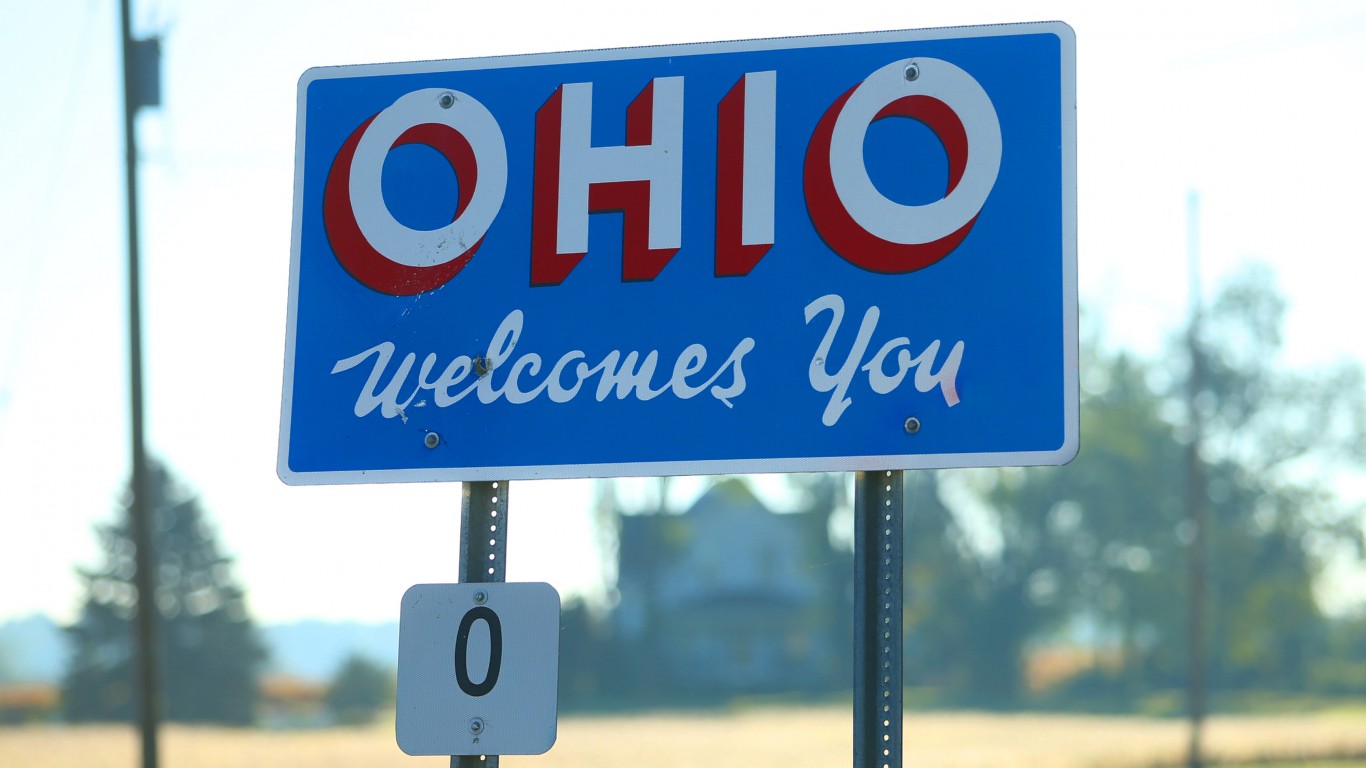Ohio
Ohio became the 17th U.S. state on March 1, 1803. With a population of 11.7 million, Ohio is the seventh-most populous state in the country. The state ranks in the lowest quarter of the best states to live in based on key measures like unemployment, poverty and average life expectancy at birth.
Population growth in Ohio has been slow in recent years. Over the 10-year period to 2019, Ohio’s population grew by just 1.3%, far below comparable national growth of 6.6%.
Ohio’s unemployment rate in 2018 was 4.6%, much higher than the national rate of 3.9%. A stronger job market would likely help reduce the state’s poverty rate of 13.9%, which is significantly worse than the national average of 13.1%.
Crime in Ohio
Ohio’s violent crime rate of 279.9 incidents for every 100,000 residents is well below the national average of 380.6 per 100,000. In 2018, there were 564 murders in the state, among the most of any state.
Ohio’s incarceration rate of 567 adults per 100,000 residents 18 or older is among the highest in the country. Cleveland, with 1,449.6 violent crimes for every 100,000 residents in 2018, is the state’s most dangerous city.
The Ohio Economy
With a 2018 gross domestic product (GDP) of $676.2 billion, Ohio’s economy is among the largest of the 50 states. Its largest industry is insurance carriers and related activities, which employs 109,185 people statewide and generates about 4.3% of the state’s total GDP. Between 2013 and 2018, the total economic output of the state’s top industry jumped by 47.1%. Still, overall economic growth in Ohio totaled 1.8% in 2018, well below the national average GDP growth of 2.9%.
Ohio has an underemployment rate (which accounts for unemployment and people who have taken part-time work out of necessity) of 8.2%. The state ranks in the upper third among the most difficult states in which to find full-time work.
Employment opportunities tend to go up with educational attainment. In Ohio, less than a third (29.0%) of the state’s adults have a bachelor’s degree, well below the national average of 32.6%. However, 90.3% of the adults in the state have at least a high-school diploma, above the national rate of 88.3%.
Ohio’s median household income of $56,111 is higher than the national median of $63,179.
Thank you for reading! Have some feedback for us?
Contact the 24/7 Wall St. editorial team.











